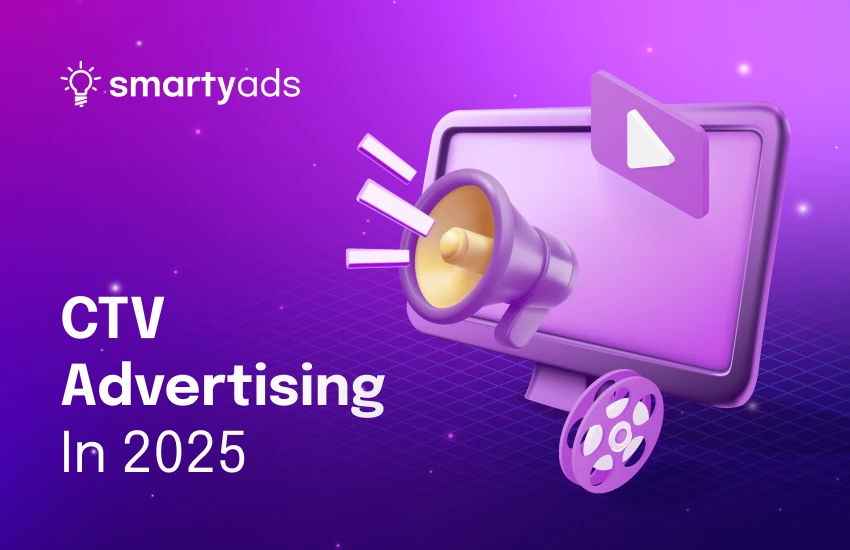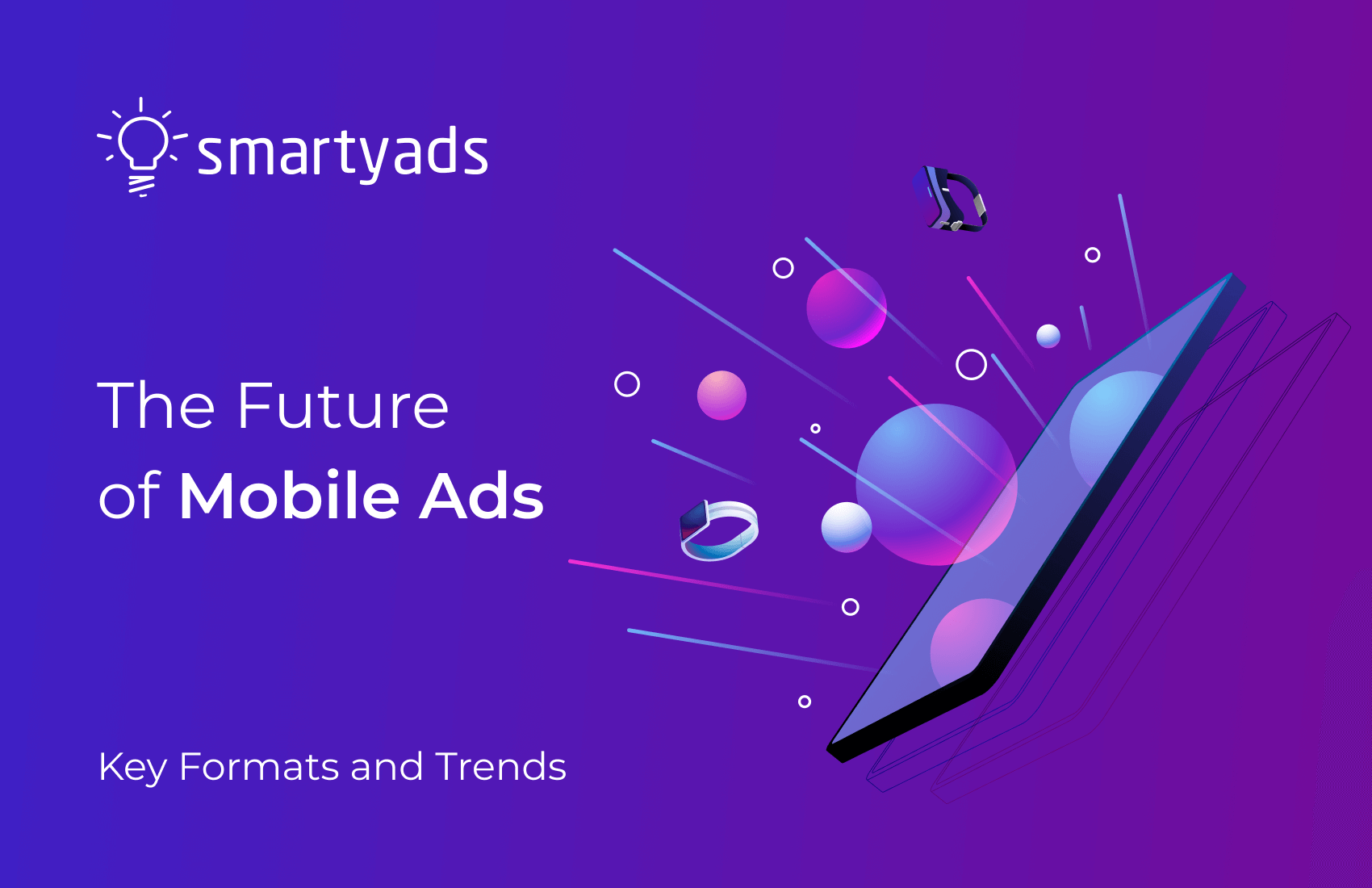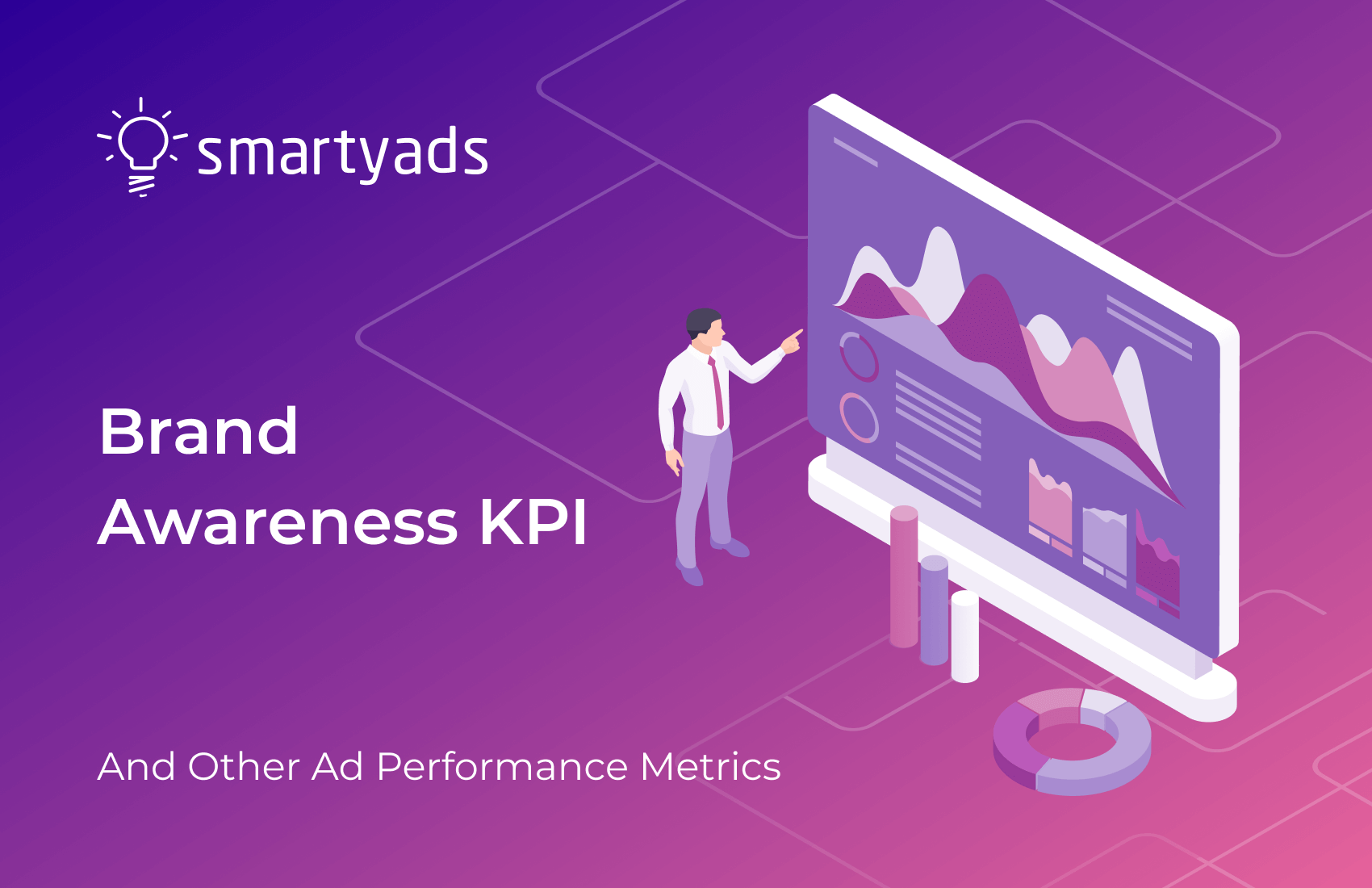Native mobile ads on mobile devices look like a rare chance of mutual benefit: more ROI-driving for advertisers, more suitable for publishers, and more than acceptable for the viewers. Since users increasingly consume content using tablets and mobile devices, the highest increase in this type of advertising is expected to hit the mobile segment.
As we’ll soon march into 2026, the real race isn’t just about blending in visually — it’s about decoding micro-moments, hijacking scroll inertia, and engineering formats that behave like content but convert like commerce. The strongest trends now revolve around shoppable flows hidden inside editorial-like storytelling, AI-personalized slots that morph per user journey, and attention metrics stepping in where simple CTRs once ruled.
So, our journey begins, and let’s start it with reviewing these ads in numbers to understand why they are so compelling and why advertisers are choosing these ads.

Mobile native advertising in numbers
Before diving into formats and creative tactics, it’s important to see where these ad units currently stand — not just as a trend, but as a rapidly scaling revenue engine. What is mobile native advertising today? In order to answer this question, you need to familiarise yourself with the impact it has today, which is really overwhelming if you take a look at the numbers that grow.
The numbers below reveal more than market growth; they signal a shift in where brands are betting on attention, trust, and conversion.
| Metric / Insight | Value / Forecast | Context / Implication |
| Global mobile ad market size (2025) | US $447B | Confirms mobile as the dominant ad battlefield |
| Mobile share of total digital ad spend (2024) | ~54.3% | Mobile-first strategies are now standard, not optional |
| Global native ad market (2024) | US $105.88B | Native is already a mature category |
| Native ad market forecast (2033) | US $346.88B (CAGR ~13.9%) | Expected steady growth across formats |
| Aggressive native forecast (2035) | US $733.3B (CAGR ~21.7%) | Indicates massive potential if adoption accelerates via AI/video/social commerce |
| Avg native CTR (mobile) | ~0.38% | 3x higher than banner ads (~0.11%) |
| Purchase intent uplift vs banners | +18% | Native drives stronger commercial outcomes |
| Brand affinity uplift | +9% | Indicates deeper emotional engagement |
| Share of internet traffic driven by mobile video by 2025 | ~85% | Signals dominance of video-native formats |
Sources of stats:
- Global mobile ad spend and mobile’s share of digital ad spend: [“Top Global Mobile Ad Spend Statistics 2025”] amraandelma,
- Native advertising performance / CTR / purchase-intent: [“Top Native Advertising Statistics 2025”] amraandelma,
- Native market size & forecast: [“Native Advertising Market Size, Share | Industry Report”] grandviewresearch,
- Alternate native forecast: [“Native Advertising Market Outlook 2025-2035”] futuremarketinsights,
- Mobile optimization / video traffic projection: [“Mobile Optimization in 2025”] adnimation.
What do these numbers actually say?
With more than half of all digital spend already happening on mobile, native formats are stepping in as the preferred vehicle for performance that doesn’t feel forced or disruptive. The fact that native CTR is nearly triple that of banner ads isn’t just a nice-to-have metric — it explains why purchase intent and brand affinity also climb when ads behave more like content than interruptions.
The projected growth — whether you believe the conservative US $346B or the aggressive US $733B scenarios — indicates that advertisers are willing to double down on formats that convert while maintaining user trust. And with mobile video expected to dominate internet traffic, the future of native likely belongs to fluid, story-driven, commerce-ready formats that don’t just catch attention but integrate into how users already scroll, watch, and shop.
Current state of mobile native ads in 2025
In 2025, native has matured from a “format that fits the content” into a shape-shifting ecosystem that adapts to scroll behavior, emotional triggers, and even micro-decision moments like “Do I want to buy this now or save it for later?”
To understand how far the category has evolved, we need to map out three things: which formats currently rule the feed, which experimental ones are quietly gaining momentum, and which industries are pouring the most money into making native ads more innovative, shoppable, immersive — and sometimes almost indistinguishable from entertainment. Plus, it is also important to understand what trend continuation we need to expect in 2026, so let’s get started.
Dominant formats today
In-feed ads
If you ask, What are native ads on mobile?, then you should know that in-feed mobile native ads are the most notorious in this domain. Most often, these ads get embedded in social or news feeds. If you're attentive, you can notice them while scrolling down the page on social networks or the website. They're marked as "sponsored" and shown among other editorial materials.
In-feed ad post looks the same as non-advertising, and thus, may quickly capture the mobile user's interest since it's targeted to a particular user category.
You can find in-feed posts on Facebook, Twitter, Instagram, Pinterest, and Tumblr feeds, specifically marked with a color. If the concept of the mobile in-feed ad is creative and memorable enough, such a type of ad can become infectious and quickly bring high incomes to the app publishers who target them programmatically.
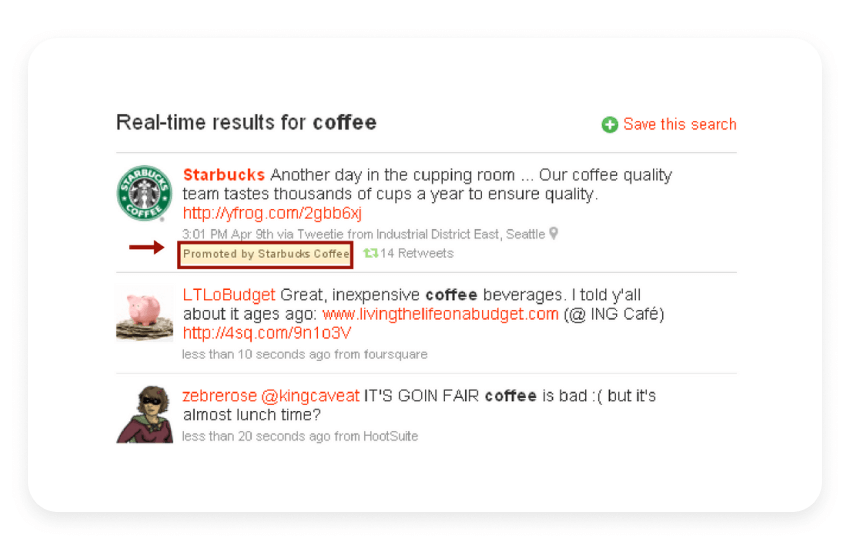

Native in-app videos
Mobile native ads work as 15-30 second long videos and can be located in the content or in-feed. It is possible to embed native ads in the video using unskippable pre-, mid-, and post-rolls. Examples of such can be found embedded in YouTube videos.
Some native video ads appear harmoniously within the app and start to autoplay in silence until the user clicks on them. Such video ads don't interfere with user experience and fit in naturally inside the app. According to the survey comparing five ad campaigns, these placements, including pre-rolls, always performed much better than average.
Such ads offer a lot of advantages, but we'll talk about the most important ones.
- They provide a more engaging and immersive experience for users as the videos are integrated into the app's content. This can result in higher user attention and better brand recall.
- These ad units often have better viewability rates than other ad formats. Since these ads are integrated into the app's interface, users are more likely to see and engage with the video content.
- These ads allow for better targeting and personalization. Advertisers can leverage data collected from the app, such as user behavior or preferences, to deliver more relevant and targeted video ads.
To ensure transparency, these in-app video ads should be clearly labeled as advertisements, similar to other ad formats. It's important for advertisers to comply with platform guidelines and industry standards to maintain user trust and avoid any deceptive practices.
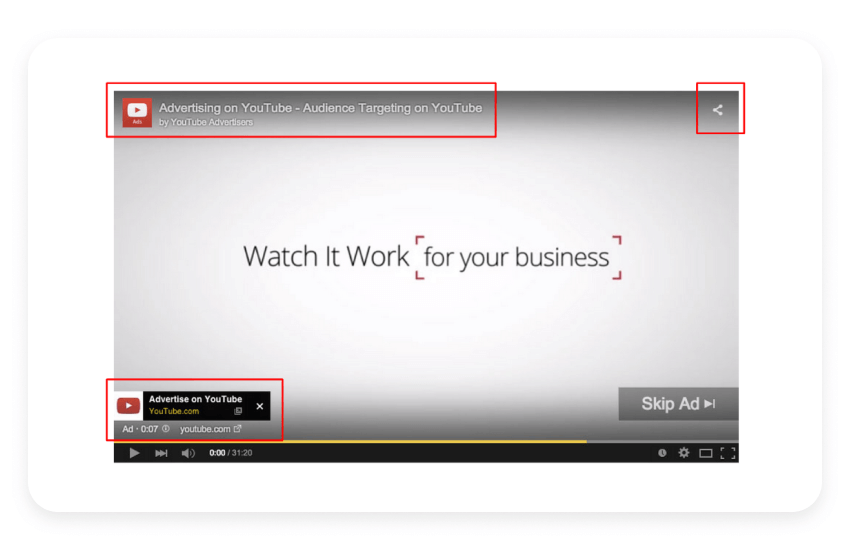
Recommendation widgets
Such ads are located in blocks usually named "Read also" or "Recommended to you". These blocks on the web page contain links to the articles (leading to other thematically related blogs or directly to the advertiser's website).
Usually, recommendation widgets are placed at the bottom of the article, but either way, they can be located at the top or in sidebars.
Some experts call recommended widgets the best mobile native ads since advertisers can expect their ads to be shared through various sources with relevant themes. According to Business Intelligence, they are also 20% better revenue growers than in-feed units.

In-search native ads
This is an advertising message that appears at the top of the user's search query and visually imitates organic search results. The ad link looks almost the same as the rest of the organic links, and its snippet corresponds to the user's request.
Even though such advertising is always color-highlighted and has an appropriate marking, around 40% of users still wrongly take such ads for authentic websites, which results in high bounce rates. You can easily find this in The New York Times, The Telegraph, The Atlantic, and famous news portals.
Sponsored or branded content
Sponsored content is usually represented by articles created and promoted in partnership with advertisers. The articles are written on the advertiser's side according to the publisher's editorial policies. The publisher posts such content and promotes it. If sponsored content is consistent with the rest of the editorial materials, relevant, and interesting to readers, they interact with it as with editorial articles.
Like any other kind of ad, such articles are marked as "sponsored" or "branded". Examples of such you can easily find in The New York Times, The Telegraph, The Atlantic, and famous news portals.
.png)
Custom native ads
Mobile app native advertising is a perfect playground for custom native advertisements that go beyond the limitations of typical formats and mobile ad sizes. In other words, it is an individual solution created for the brand and based on personal goals.
Here is an example of such: The users are encouraged to make "coub" from the brand's video right in the "coub" editor. The user participates and wins the prize for the most creative "coub". In just a week, such a custom branding campaign can collect more than a million "coub" views. The same mechanism is applied to mobile games, long reads, videos, polls, tests, and quizzes.
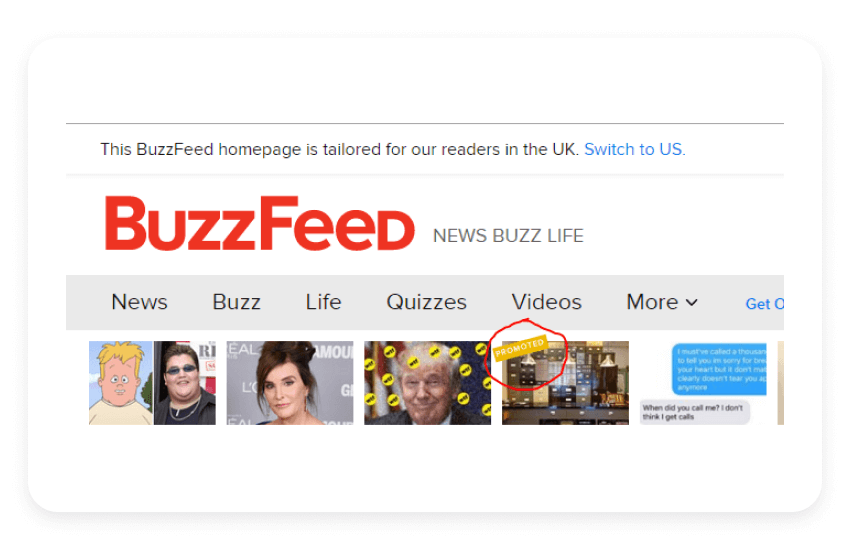
New formats on the rise
AR/VR natives
No longer just gimmicky lenses, AR/VR native ads in mobile app can act as portals into branded worlds. Users don’t just see a product — they move around it, interact with it, and sometimes even “live” a storyline powered by it. As headsets get lighter and smartphone AR becomes mainstream, these ads are starting to feel less like marketing and more like immersive decision-making tools.

Shoppable natives
Far from being simple product tags on videos, today’s shoppable native formats are designed to collapse the gap between inspiration and purchase. Users can explore a look, tap into dynamic pricing, and check out without ever breaking narrative flow. It’s not “See now → Buy now” anymore — it’s more like “Feel something → Own it instantly.”

Audio natives
These formats now blend brand voices into conversations users are already emotionally invested in — whether that’s within a podcast story arc or during a calming ambient sound session. The best executions mimic host style, pacing, and mood so closely they feel like a recommendation rather than an ad. With screen fatigue on the rise, audio native is becoming a subtle yet powerful persuasion channel. Below, you can see some of the mobile native ads examples in the audio niche (placed in Spotify).
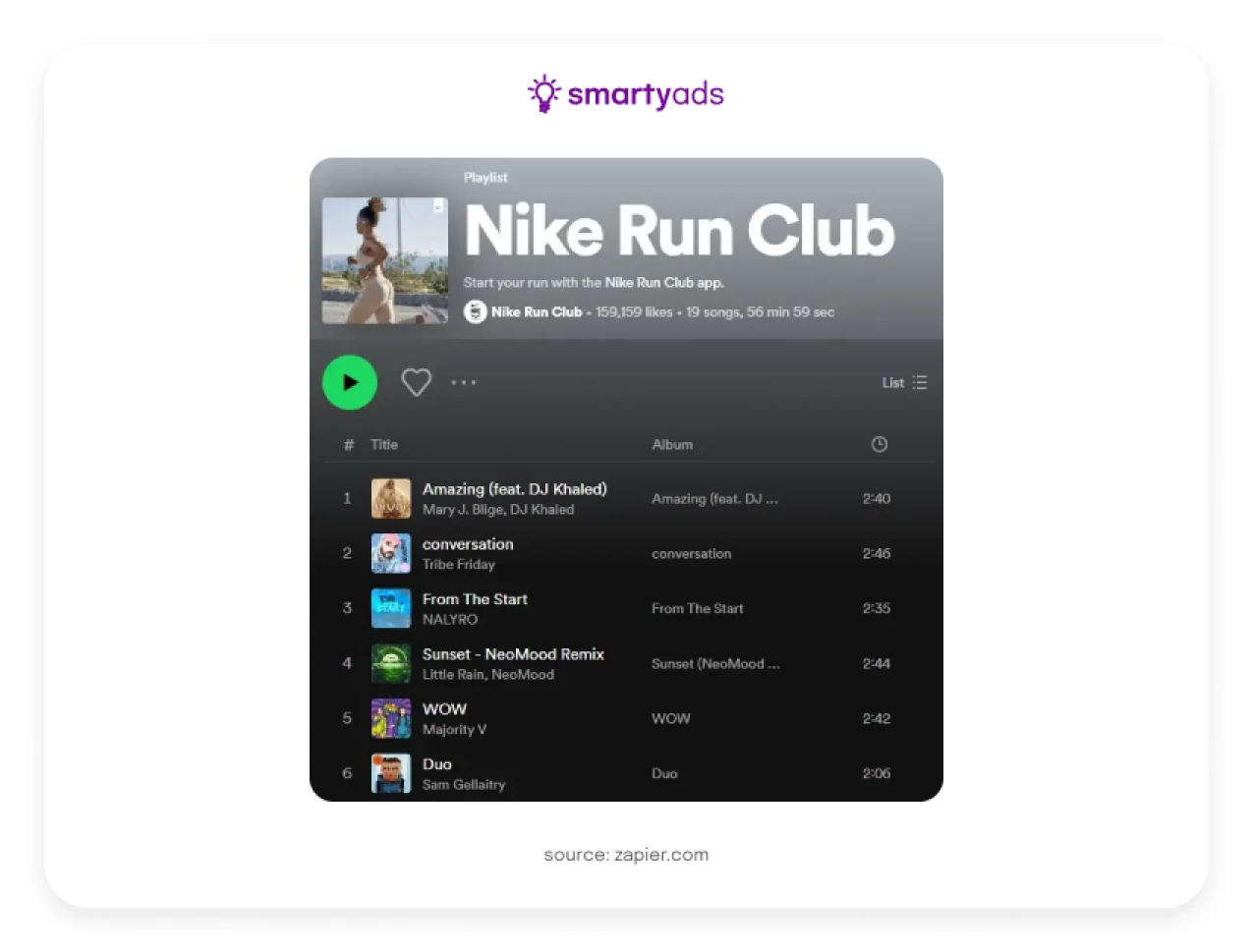
In-game natives
In 2025, in-game native placements don’t just sit on the sidelines — they’re woven into the game’s logic, progression, and reward systems. A branded skin isn’t an ad, it’s an identity upgrade; a sponsored mission isn’t a promotion, it’s a quest. This shift from visibility to utility makes players choose to engage rather than tolerate impressions. In-game natives range in formats and sizes; some units appear very delicate and small at the bottom of the screen while the user plays, whereas AAA or console-style games often favor larger, more cinematic placements.
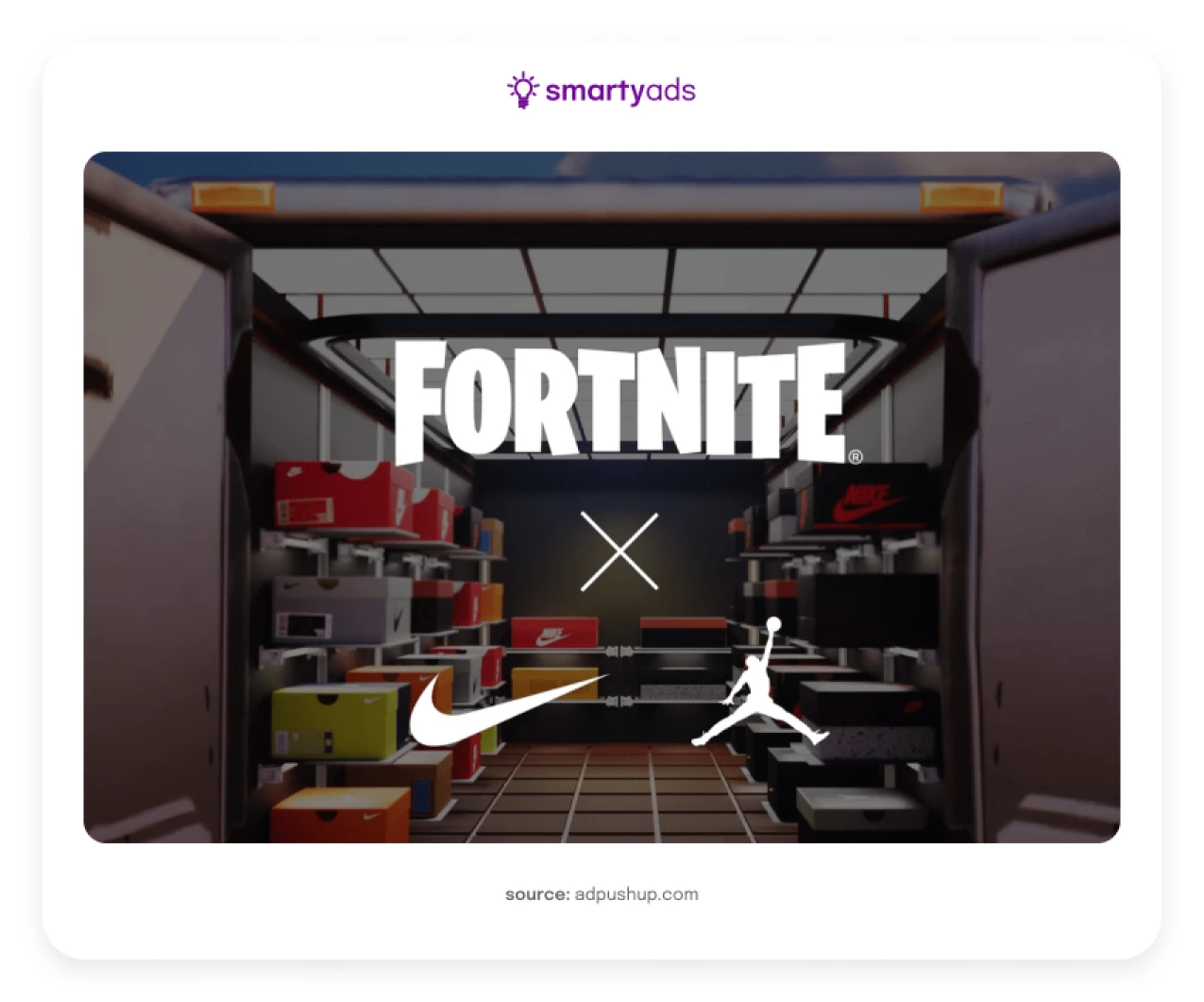
Advertiser adoption: who is investing most
In 2025, native advertising is experiencing significant growth across various sectors.
- Retail: Retail media spending in the U.S. is projected to reach $60 billion in 2025, marking a 20% increase from the previous year.
- Gaming: The in-game advertising market is expected to grow from $9.84 billion in 2024 to $11.03 billion in 2025, reflecting a 12% compound annual growth rate.
- Fintech: Fintech revenues grew 21% year-over-year in 2024, outpacing the 6% growth in the broader financial services sector.
- Streaming: Netflix's ad-supported tier has reached 94 million users as of May 2025, highlighting the growing importance of advertising in streaming platforms.
Performance benchmarks & user behavior insights
Mobile-native content is growing tremendously, and so is the performance of ads:
- CTR & Engagement: Native ads achieve an average click-through rate (CTR) of 0.30% to 0.60%, with video engagement lifts ranging from +180% to +530% compared to standard display ads.
- Dwell Time: Users spend approximately 20% more time engaging with native ads than traditional banner ads, indicating higher content absorption.
- Personalization Impact: Personalized native ads can drive up to 3 times higher return on investment (ROI) compared to non-personalized ads.
- Contextual Targeting Effectiveness: Contextual ads are 50% more likely to be clicked on and have a 30% higher conversion rate than non-contextual ads.
- User Perception: 54% of consumers trust native ads more than traditional display ads, with 70% preferring to learn about products through content rather than direct advertisements.
- Ad Fatigue: 93% of consumers actively skip ads, highlighting the importance of freshness and relevance in ad creatives.
Challenges & risks for mobile native advertising
While the format offers higher engagement, escape from ad blockers, and relief from banner blindness, it also introduces specific challenges that advertisers and publishers must navigate carefully.
Privacy & regulation (GDPR, CCPA, Apple ATT, Google Privacy Sandbox)
Native ads rely heavily on user data for personalization and targeting. Privacy regulations like GDPR, CCPA, Apple’s App Tracking Transparency (ATT), and Google’s Privacy Sandbox increasingly restrict the collection and use of personal data. Advertisers must ensure compliance, balancing personalized experiences with user consent to avoid fines and reputational risks.
Identity & measurement
Accurate measurement of mobile native ad formats is complex. Standard metrics like CTR, conversions, and engagement apply, but interactive and sponsored content require additional analysis of dwell time, scroll depth, and element-level interactions. Without a unified identity framework, attribution can be fragmented, complicating ROI calculations for cross-device campaigns.
Ad fraud & brand safety issues specific to natives
While these ads naturally evade some forms of ad fraud (e.g., banner click fraud), impression fraud, bot engagement, and contextually unsafe placements remain concerns. Poorly labeled native content can also blur lines with editorial content, potentially violating FTC guidance and harming brand trust.
UX vs monetization: the fine balance
The main appeal of native advertising lies in its non-intrusive nature. However, there’s a tension between monetization goals and user experience. Ads must be clearly labeled according to the IAB Native Advertising Playbook 2.0 and FTC guidelines; otherwise, even a well-designed unit risks damaging user trust. Effective measurement should track both engagement and ad-driven outcomes, ensuring that revenue does not come at the cost of app or content usability.
Trends shaping the future of mobile native ads (2025 and beyond)
In 2025, the game isn’t just about placement; it’s about real-time intuition, frictionless commerce, and ethical resonance. Ads are learning to think like users, move like content, and sometimes even behave like experiences themselves.
From AI that reshapes creative on the fly, to 5G-powered AR moments, to feeds that quietly turn into marketplaces, the coming era is about ads that feel alive rather than imposed.
AI-driven personalization & dynamic creative optimization
Ads now adapt in real time to each user’s behavior, context, and mood. Dynamic creative optimization allows brands to swap elements like visuals, CTAs, or copy on the fly, ensuring every impression feels handcrafted rather than templated.
The impact of 5G, streaming & edge computing
Faster connectivity and reduced latency mean high-fidelity video, AR/VR experiences, and interactive formats can load instantly, even on mobile. Edge computing enables localized content decisions, making native ads smarter, lighter, and hyper-relevant.
Rise of commerce-driven formats
Native is becoming the bridge between content and conversion. Shoppable posts, social commerce integrations, and retail media networks let users discover and buy in the same scroll, turning feeds into frictionless marketplaces.
Sustainable & ethical advertising
Brands are experimenting with green ads, reduced clutter, and ethical targeting, balancing business goals with user respect and environmental consciousness. Minimalism in ad design isn’t just aesthetic — it’s strategic, improving engagement while lowering cognitive load.
Case studies & industry insights
In mobile native advertising, 2025 is all about learning by doing. Some campaigns prove the format’s power with measurable lift, others push boundaries with new approaches. Some examples you can see below:
Successful campaigns with measurable lift
- Vodafone’s native campaigns with TripleLift increased view-through rates by 38% and brand recall by 22%, while seamlessly integrating with editorial content to avoid disrupting the user experience. (triplelift.com)
- Sephora’s AR “Virtual Artist” app drove a 15% uplift in online conversions and 50% higher product engagement compared to standard display campaigns, showing the power of immersive, interactive native formats. (hqsoftwarelab.com)
- In-game placements in NBA 2K and FIFA boosted player interaction with branded items by 40–60% versus static banners, proving that native integration in gaming delivers both engagement and brand memorability. (viantinc.com)
Experimental formats: AR try-ons, gamified placements
AR try-ons, gamified placements, and interactive mini-games are transforming ads from static interruptions into immersive experiences. Brands using these formats report 3–5x higher engagement rates than traditional banners, as users actively participate rather than passively view. The key is blending novelty with context — when AR or gamification aligns with the user’s intent, it not only captures attention but also builds brand affinity and drives conversion in subtle, memorable ways.
Lessons learned from failures (low CTR, bad UX, misaligned creative)
Even in a thriving space, not every campaign lands with aspiring mobile native ad trends. Misaligned creative, intrusive UX, or poorly targeted messaging can lead to low CTR, high abandonment, and wasted spend. Studies suggest that over two-thirds of advertisers believe half of their mobile ad budget is spent on ineffective campaigns. Below you can find some examples of mistakes in ads that have converted into bad results:
- Weather Underground's Misleading Search Bar: A native ad disguised as a search bar led users to an unrelated website, causing confusion and frustration.
- Gawker's "King of the Nerds" Promo: An article promoting a reality TV show lacked clear labeling and was perceived as offensive, leading to negative user reactions.
- Fashion Retail Campaign Misalignment: A fashion retailer's campaign failed to resonate with its target audience due to mismatched messaging and poor creative execution, resulting in low engagement.
These examples highlight the importance of aligning creative content with audience expectations, ensuring transparency, and maintaining relevance to avoid negative outcomes in native advertising campaigns.
Takeaway thought
Studies on native ad format today have one underlying pattern — they agree on a straightforward fact that such advertising (especially mobile ads) attracts more user attention. While native advertising mobile ad increases engagement, user loyalty grows, which inevitably translates into higher CTR.
The popularity of programmatic purchases allows various advertising formats to occupy the lion's share in the segment of mobile digital spending. However, this format will only work perfectly for your brand if you comply with ethics, mark the ad unit properly, and channel the ad message to customers at the right time. Luckily, it has already become real with programmatic advertising.
Ready to see results? Register at SmartyAds DSP!
FAQ
Selecting the right platform is crucial for effective native mobile campaigns. Look for a partner with broad inventory access, precise targeting, dynamic creative capabilities, and robust analytics. SmartyAds DSP offers all this, enabling advertisers to reach engaged audiences, optimize in real time, and measure ROI efficiently across mobile apps and websites.
Success is measured through CTR, engagement, dwell time, conversions, and brand lift. Interactive formats may also track element-level interactions. Using a DSP like SmartyAds, advertisers can monitor these metrics in real time, A/B test creatives, and optimize campaigns for both performance and user experience.
Most natives bypass traditional ad blockers because they blend seamlessly with app or site content and deliver genuine value. Platforms like SmartyAds DSP ensure proper labeling and compliance, making ads both user-friendly and effective, while maintaining transparency and measurable performance.



